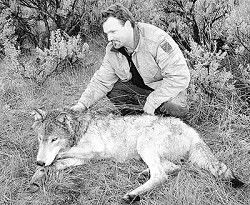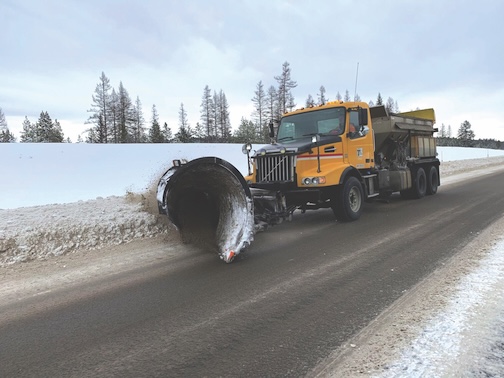Wolves are here, But Not For Hunting
Published 5:00 pm Thursday, August 20, 2009

- of the U.S. Fish and Wildlife ServiceRuss Morgan, ODFW wolf coordinator, with the wolf as it recovers from anesthesia used during the radio-collaring effort on May 3, 2009.
LA GRANDE – The Oregon Department of Fish and Wildlife is keeping watch as wolves settle into the state after a 50-year absence.
Trending
“Over the last year, we continued to have more reports of wolf activity in Eastern Oregon,” said Russ Morgan, ODFW wolf coordinator. “The number of reports is up dramatically.”
Wolves in the eastern part of the state no longer have federal protection under the Endangered Species Act – but they are protected by the state’s own endangered species law.
It is not legal to hunt wolves anywhere in Oregon. Even accidentally killing a wolf after mistaking it for a coyote can bring a stiff penalty.
Trending
Officials say wolf hunting could be possible in Oregon’s future – but only if the population is established and documented at a sustainable level. Morgan said the research going on now to track and count wolves is critical.
“The key is to know how many there are,” he said. “You can’t manage them without good information on population.”
So far, the agency knows wolves are coming into the state from Idaho, and wolf activity has been confirmed in the past couple of years in three northeastern Oregon counties: Wallowa, Baker and Union.
This year, ODFW crews captured, radio-collared and released two wolves.
The most recent was in July, when ODFW was looking into reports of wolf pups in the Imnaha area of Wallowa County. Morgan said that led to the trapping of one adult, a female dubbed B300, that had previously been caught and radio-collared back in Idaho.
Officials suspected she was still in the area, although her original collar went dead in September 2008. Morgan said last month’s trapping enabled ODFW to put a new collar on her and also to confirm that she has had pups this season.
“Our next step will be to go back in and try to document how many pups,” he said.
Soon after B300’s release, officials sighted a black adult wolf several miles away. They were unable to trap the animal but suspect it is the mate of B300.
Morgan said trapping efforts would resume in August.
The other collared wolf – a young male – was one of two wolves blamed for the killing of about two dozen lambs and a calf last May in the Keating area in Baker County. Morgan said the two may be siblings or “disperse wolves” that had found each other while seeking to establish their own territory.
After the May livestock predation, ODFW officials began hazing the wolves to convince them that the open valley where they livestock range “is not a good place for them to be.”
Since then, aerial monitoring indicated that the collared wolf is living in the forest north of the Keating Valley, and no further livestock predation has been reported, Morgan said.
Other sightings have been reported in Umatilla County. In June someone saw wolves near a band of sheep, including a pup that hid in a hollow log. However, ODFW investigated the sighting and found no wolf tracks or scat in the area. Officials say evidence from the log suggested that coyotes, common in the area, were the real culprits.
Morgan said sightings also have been reported in the Dixie Butte area of Grant County, and ODFW will watching that area in the coming weeks.
“It’s certainly possible,” he said.
Oregon’s first contemporary wolf pack was identified in July 2008, when officials confirmed a group including both adults and pups in a forested area of northern Union County. It was the first evidence of multiple wolves and wolf reproduction in Oregon since wolves were eliminated in the state back in the mid-1940s.
Wildlife biologists conducting a howling survey heard the howls of both adults and pups simultaneously. The exact number of wolves was not determined, but at least two adults and two pups were heard.
Earlier wolf incidents in Eastern Oregon include the March 1999 capture of a radio-collared female was captured in Grant County; she was returned to Idaho.









